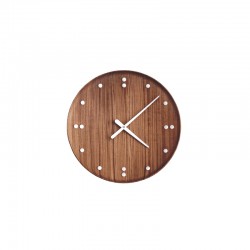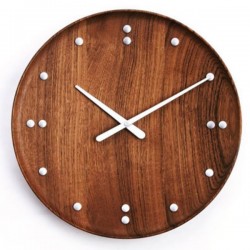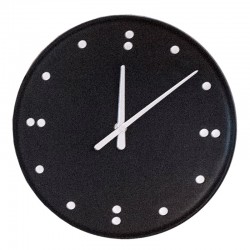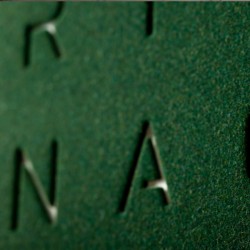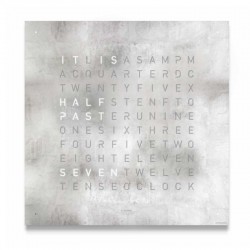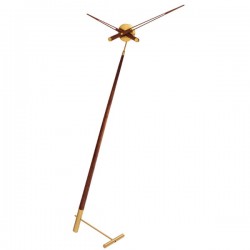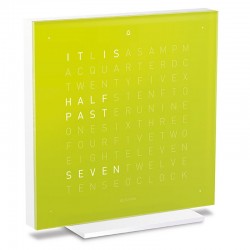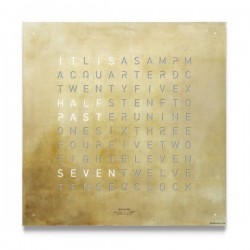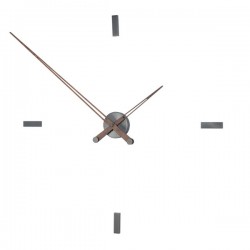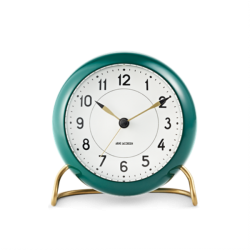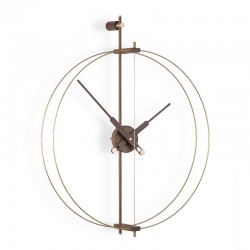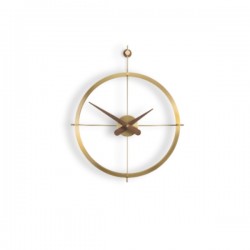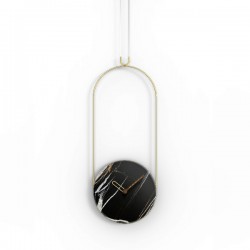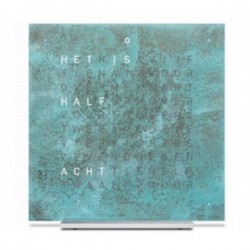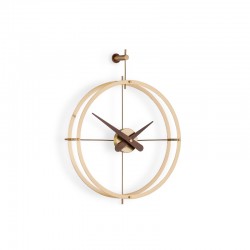The FJ Clock was designed as a part of the interior of the New York United Nation Trusteeship Council Chamber in 1950 and it captures the essence of Juhl’s design aesthetic.
The circular shape complementing the natural qualities of the teak wood and the numberless aluminum dial captures his flair for clever minimalism.
The simple form of this winsome wooden clock comes courtesy of late Danish designer Finn Juhl.
The original was made in the 1950s for the Trusteeship Council Chamber of the UN building in New York, where it still hangs.
The Architectmade reissue is half the size of its forebear; it is now just over 30cm wide
- Specifications
Material and Finish
Natural: Teak wood and Aluminium
Black: Ash wood, Stained and Aluminium- Size Description
Diameter 25cm
-
Finn Juhl
Finn Juhl was born on 30 January 1912 to an authoritarian father who was a textile wholesaler representing several English, Scottish and Swiss textile manufacturers in Denmark, and a mother who died shortly after he was born. From an early age he wanted to become an art historian, already as a teenager spending much time at the National Gallery and in spite of his young age receiving permission to borrow books at the library of the Ny Carlsberg Glyptotek, but his father disapproved his aspirations which he considered flimsy and convinced him instead to pursue a career in architecture. He was admitted to the Architecture School at the Royal Danish Academy of Fine Arts where from 1930 to 1934 he studied under Kay Fisker, a leading architect of his day and noted lecturer. After graduating, Juhl worked for ten years at Vilhelm Lauritzen's architectural firm, where he had also apprenticed as a student. In close collaboration with Viggo Boesen, Lauritzen's closest, Juhl was responsible for much of the interior design of the national Danish broadcaster Danmarks Radio's Radio Building, one of the firm's most high-profile assignments during those years. In 1943 he received the C.F. Hansen prize for young architects.
こちらの商品もお好みかもしれません
価格
€661.16
Architectmade FJ Clock Black
価格
€247.10
Related products
Qlocktwo Large Green Velvet
価格
€6,363.64
Qlocktwo Creator’s Edition Platinum
価格
€3,326.45
Nomon Pisa Floor Clock
価格
€517.00
Qlocktwo Quable Color Cable
価格
€40.50
Qlocktwo Touch Pure Lime Juice (Green)
価格
€413.22
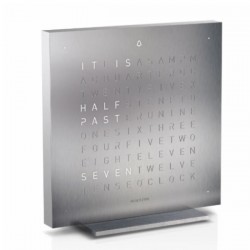
Qlocktwo Touch Full Metal
価格
€607.44
Qlocktwo Creator's Edition Silver & Gold
価格
€2,925.62
Nomon Tacon T Clock
価格
€380.00
Rosendahl Station Table Clock Green
価格
€111.53
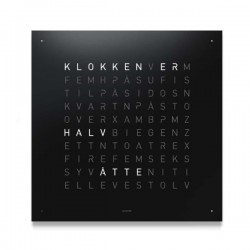
Qlocktwo Classic Black Pepper Mat
価格
€1,309.92
Nomon Mini Barcelona Premium Clock
価格
€790.00
Nomom Two Premium Points
価格
€790.00
Nomon Colgante Marble Clock
価格
€870.00
Nomon Brisa Extra Large Clock
価格
€490.00
Qlocktwo Touch Vintage Copper
価格
€900.83
Nomon 2 Puntos Premium Gold Clock
価格
€790.00


 EUR
EUR



